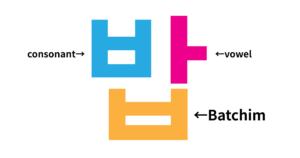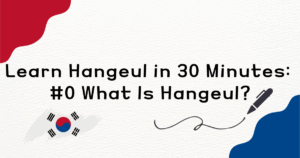Hi, it’s Ayakim here.
Starting today, let’s begin learning Korean grammar step by step.
You might be thinking:
“Ugh, grammar is boring!”
“Isn’t it faster to just memorize phrases?”
I get it — but trust me, knowing grammar helps you read and speak Korean without relying on pure memorization.
And don’t worry — on my Substack, we only cover the super basics, so everything you learn here will be practical and easy to use.
Each lesson is short and simple, so feel free to read it during a break at work or while taking care of things at home.
Let’s deepen your understanding of Korean together!
💌 Want more K-POP deep dives like this?
Subscribe to Hello Bias Letters, our free Substack newsletter!
Each week, we unpack K-POP culture with care—from fan behavior to behind-the-scenes stories.
→ Join us here
Korean Has Three Basic Speech Styles

Korean has three main verb endings: the Hamnida style, the Haeyo style, and the Handa style.
Each one is used depending on the situation and the person you’re speaking to.
Today, let’s take a closer look at the differences between these three styles!
(Detailed explanations for each ending will be covered in separate articles!)
Formal Style — 합니다 (hamnida)
The hamnida style is the most formal verb ending in Korean.
It’s used when speaking to superiors, teachers, or people you’re meeting for the first time.
Example:
저는 한국어를 공부합니다.
jeoneun hangugeoreul gongbu-hamnida
Meaning: I study Korean.
You’ll hear this style often in dramas and official situations.
Whenever you hear a verb ending in –니다 (-nida), you can recognize it as the hamnida style.
Polite Conversational Style — 해요 (haeyo)
The haeyo style is the most commonly used form in everyday conversation.
It’s less formal than hamnida-style, yet still polite and friendly.
You can use it when talking to store staff, café workers, or people you’re not very close with—
which is why I recommend Korean learners start with the haeyo style first!
Example:
저는 한국어 공부해요.
jeoneun hangugeo gongbu-haeyo
Meaning: I’m studying Korean / I study Korean.
When you hear a verb ending in –요 (-yo), you’re hearing the haeyo style.
You’ll notice it a lot in YouTube videos, K-dramas, and variety shows—try listening for it!
Casual Style — 한다 (handa)
The handa style is also known as banmal, meaning casual or “informal speech.”
It’s used among close friends or in very casual settings.
Using it with superiors or people you’ve just met can be considered rude.
Since Korean culture places importance on hierarchy,
make sure to use this style only with people you’re close to.
Example:
나 한국어 공부한다.
na hangugeo gongbu-handa
Meaning: I study Korean. (casual)
By the way, the writing section of the TOPIK exam requires you to write in the handa style.
So if you’re planning to take TOPIK in the future, it’s definitely a style worth learning.
Mini Quiz — Check Your Understanding!
Let’s review today’s lesson through a short mini quiz!
1) Which ending do you use when speaking to your boss or teacher?
A) 해요
B) 한다
C) 합니다
2) Which ending is polite but natural for everyday conversation?
A) 합니다
B) 해요
C) 한다
3) Which ending is used casually with close friends?
A) 한다
B) 합니다
C) 해요
Answer Key
- C — 합니다体
- B — 해요体
- A — 한다体
Summary
That’s it for today!
We only looked at the basics, but understanding these three speech styles will make the rest of your Korean grammar journey much easier.
Take it slow, review the skit, and get comfortable with the endings.
Want to learn Korean through fun mini skits? Join me on my Substack!
You’ll find easy lessons, K-POP examples, and beginner-friendly explanations. 🌟
💬 If you found this post helpful, consider supporting me with a coffee!
Your support keeps Hello Bias going ☕💛
👉 Buy Me a Coffee







